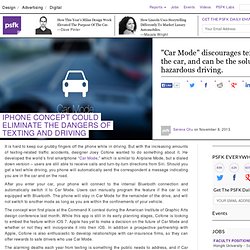

Identifying the ecological effects of releasing genetically engineered insects. University of Minnesota researchers have developed a new approach for identifying potential environmental effects of deliberate releases of genetically engineered (GE) insects.

The researchers outline their approach in a paper in the journal Ecology and Evolution. The authors include professor of entomology David Andow and Aaron David, Joe Kaser, Amy Morey and Alex Roth - four graduate students who received NSF Integrative Graduate Education and Research Traineeships (IGERT) - the National Science Foundation's flagship interdisciplinary training program educating U.S. Ph.D. scientists and engineers. GE insects hold great promise for significantly changing pest management and fighting insect borne human diseases throughout the world.
Before releasing GE insects, scientists, governments and industry must examine the possible ecological effects GE insects could have by doing ecological risk assessments (ERA). Spain Considers Release Of Genetically Modified Fruit Flies, Controversy Simmers. Medical uses of genetic technology are well received.

But agricultural uses are a different story, generating controversy at every turn. In the United States, where genetically modified strains dominate the most common crops, fights have turned to whether foods that contain those foods should have to be labeled. In Europe, strict rules have kept GM crops almost entirely out. But the use of genetically modified insects presents a third use case, where public opinion remains unformed. Someone Invented Magic And It Is Freaking Us Out. For more stories about ridiculous things, follow us on Facebook. - “I am so sick of my T-shirt getting wet whenever I pour a lot of liquid on it!”

“I wish my iPhone 4 or 5 would not get so damaged every time I carefully place it at the bottom of a jug filled with water!” iPhone Concept Could Eliminate The Dangers Of Texting And Driving. It is hard to keep our grubby fingers off the phone while in driving.

But with the increasing amounts of texting-related traffic accidents, designer Joey Cofone wanted to do something about it. He developed the world’s first smartphone “Car Mode,” which is similar to Airplane Mode, but a dialed down version – users are still able to receive calls and turn-by-turn directions from Siri. Should you get a text while driving, you phone will automatically send the correspondent a message indicating you are in the car and on the road. After you enter your car, your phone will connect to the internal Bluetooth connection and automatically switch it to Car Mode. Users can manually program the feature if the car is not equipped with Bluetooth. The concept won first place at the Command X contest during the American Institute of Graphic Arts design conference last month. Car Mode Source: Mashable Image: Mashable. Portable Lab Toolbox Generates Excitement Around Genetic Testing. You, too, could join the legions of biotechnology researchers studying the genetic makeup of the world with your very own Darwin Toolbox.

A group of students at the University College London aim to create a portable genetic lab-in-a-box that anyone can use to analyze DNA. Computer science student Philipp Boeing, who is involved in the project, explained: We want to make biotechnology accessible for everyone and decrease any interference that sits between society and biotechnology everywhere. Boeing presented the kit — for now, a work in progress — at the Maker Faire in Rome last week.
When finished, it will include a sized-down Polymerase Chain Reaction machine, a centrifuge, and a gel box. The students have yet to decide whether the 13-by-11-inch box will be an open-source project or more prescriptive in its design, but they’re hurriedly readying it for the International Genetically Engineered Machine (iGEM) competition at MIT in November. Darwin Toolbox Images via Darwin Toolbox. After Touch Screens, Researchers Demonstrate Electronic Recording and Replay of Human Touch. After Touch Screens, Researchers Demonstrate Electronic Recording and Replay of Human Touch San Diego, CA, September 4, 2013 -- Researchers at the University of California, San Diego report a breakthrough in technology that could pave the way for digital systems to record, store, edit and replay information in a dimension that goes beyond what we can see or hear: touch.

“Touch was largely bypassed by the digital revolution, except for touch-screen displays, because it seemed too difficult to replicate what analog haptic devices – or human touch – can produce,” said Deli Wang, a professor of Electrical and Computer Engineering (ECE) in UC San Diego’s Jacobs School of Engineering. “But think about it: being able to reproduce the sense of touch in connection with audio and visual information could create a new communications revolution.” Wang is the senior author on a paper* appearing in Nature Publishing Group’s Scientific Reports, published online Aug. 28.
Computational design of protein-small molecule interactions. New "spintronic" OLED. Researchers from the University of Utah have developed a new kind of “spintronic” OLED (organic light-emitting diode) device known as a spin-polarized OLED.

Unlike LED displays, OLED displays use organic carbon-based molecules in the emissive layers of their panels. This new device would be brighter, cheaper and more efficient than regular OLEDs found in the current crop of TVs, computer displays, traffic lights and other electronic devices.